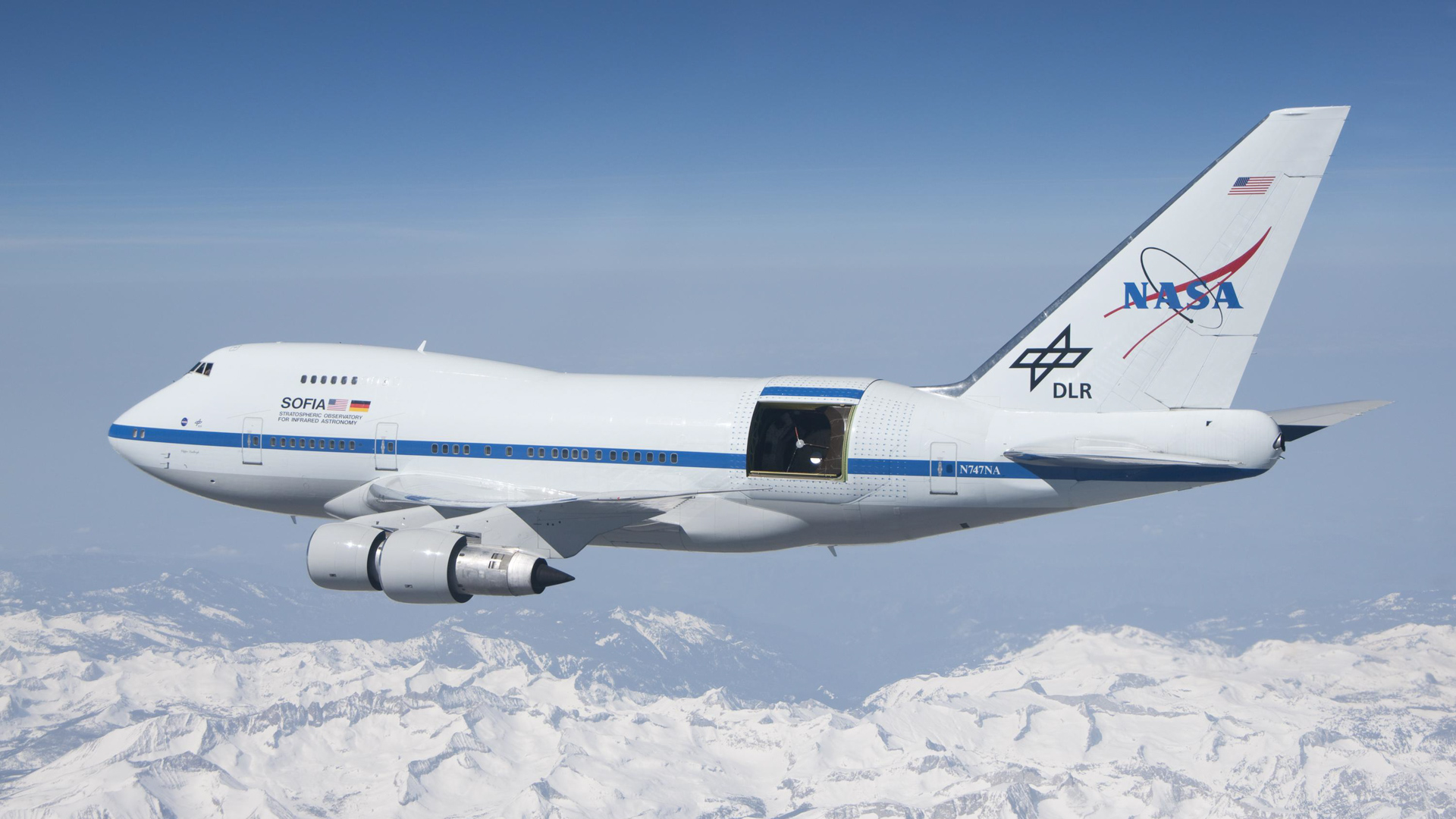

NASA builds cool rockets, but a lesser-known fact is that the organization also builds cool airplanes. One of the coolest projects it’s ever built, SOFIA (the Stratospheric Observatory for Infrared Astronomy), sadly has been retired but only after a nearly decade-long operational lifespan marked by impressive scientific discovery. As an aviation geek, NASA fangirl, and general enthusiast of night-sky observation, SOFIA is the easiest plane for me to love ever constructed, as she (I call her “she”; come on, her name is Sofia) sits in the middle of the world’s coolest Venn Diagram.
SOFIA is a modified Boeing 747-SP with a giant hole cut into the fuselage, with a massive 17-ton, 100-inch diameter telescope aimed out of the chasm. The operational principle was simple: By flying an infrared telescope into the stratosphere, SOFIA was able to bypass 99 percent of the infrared-blocking, water-vapor-laden layers of the Earth’s atmosphere and get vastly more detailed imagery than any Earth-bound observatory ever could. SOFIA would fly through the night for up to 12 hours at a time at altitudes as high as 45,000 feet with her massive 3,000-pound telescope door open, taking detailed images of deep space with her German Aerospace Center (DLR)-built eight-foot telescope. Another benefit of SOFIA was that the telescope could be maintained and modified every time she landed, rather than requiring a vastly complicated and difficult low-earth-orbit space flight to service like space-bound telescopes require.




SOFIA started life as a Pan-Am passenger jet in the late ’70s and was acquired by NASA in 1997 to use as a flying laboratory. After a decade of research and development, her maiden flight as a research plane was April 26, 2007, and the first imagery from the telescope was taken in 2010. In the years since, she’s been used to research the atmospheric composition of Pluto, detect oxygen on Mars, discover molecular water on the Earth’s Moon, and take countless invisible-light images of deep-space objects.


Her operational life ends on Sept. 30, after analysis determined that her productivity wasn’t worth the costs as priorities shift within the agency. She joins a fleet of other retired Boeing NASA craft, including the Shuttle-carrying pair of modified 747s and the Weightless Wonder series of KC-135s used for astronaut training in zero-gravity environments. NASA has not announced if SOFIA will be displayed, but if she is, I can assure you that I’ll be making the trip.
Got a tip or question for the author? Contact her directly: victoria.scott@thedrive.com.